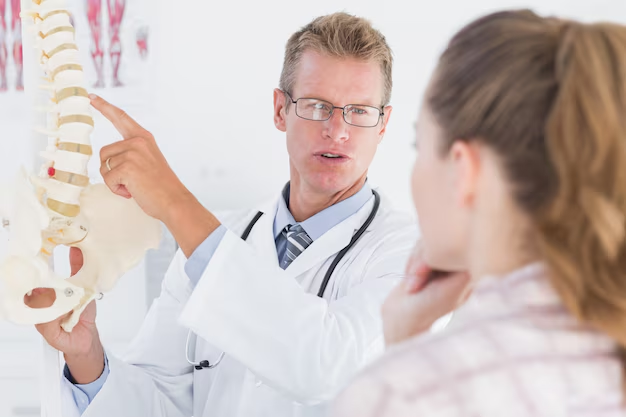Understanding Scoliosis: Can It Be Corrected?
Dealing with scoliosis can be a challenging journey for many, given its complex nature and varying impacts on the body. As questions often arise regarding whether scoliosis can be "fixed," it’s important to explore this condition comprehensively. Providing insights from different angles helps in understanding the condition better, ultimately empowering those affected to make informed decisions about their health.
What is Scoliosis?
Scoliosis is a medical condition characterized by an abnormal lateral curvature of the spine. While a perfectly straight spine is the norm, individuals with scoliosis have spines that curve side to side, potentially resulting in a C- or S-shaped curve. This condition can vary significantly in severity, with some cases being barely noticeable and others requiring significant medical attention.
Common Causes and Risk Factors
Understanding what contributes to the development of scoliosis is crucial. Although the exact cause of most scoliosis cases isn't known, termed idiopathic scoliosis, there are several contributing factors:
- Genetics: Scoliosis tends to run in families, suggesting a genetic component.
- Neuromuscular conditions: Diseases such as muscular dystrophy or cerebral palsy can lead to scoliosis.
- Congenital issues: Abnormalities in the spine's formation can be a cause.
- Age and Gender: More common during the growth spurt before puberty, and it tends to affect more females than males.
Is Scoliosis Fixable?
The notion of "fixing" scoliosis depends largely on how one defines a "fix." Scoliosis cannot always be cured in the traditional sense, but it can often be managed, and its progression can be halted or slowed down.
Non-Surgical Approaches
In mild cases of scoliosis, non-surgical methods can be effective. Here are some common strategies:
Bracing
Bracing is a common treatment for young individuals with scoliosis, especially those still growing. The goal isn't to fix the curve but to prevent further curvature as the body grows.
- Types of Braces: The two main types are thoracolumbosacral orthosis (TLSO) and a Milwaukee brace, each designed to support the spine.
- Effectiveness: Works best when the brace is worn as prescribed, typically around 16-23 hours a day.
Physical Therapy and Exercise
Exercise and physical therapy play a supportive role in managing scoliosis:
- Strengthening exercises: To stabilize the spine and prevent worsening.
- Stretching: Helps maintain flexibility and reduce pain.
- Postural training: Encourages proper alignment.
Alternative Therapies
While standard medical treatments are essential, some turn to alternative methods to complement their care. Keep in mind these methods should be discussed and considered as supportive rather than primary treatments:
- Chiropractic Care: Can help improve spine functionality and reduce discomfort.
- Yoga and Pilates: Focus on enhancing flexibility and strength.
- Acupuncture: Some find relief in symptoms through this traditional practice.
When is Surgery Needed?
In severe cases or when conservative treatment fails, surgery might be recommended:
Surgical Options
The main objective of scoliosis surgery is to rectify the curve to a more normal alignment and prevent any further progression. The most common surgical procedure is spinal fusion.
- Spinal Fusion: Involves correcting the curve and fusing two or more vertebrae together to maintain alignment.
- Instrumentation: Metal rods, screws, and other implants are often used to hold the spine in place.
- Recovery and Outcomes: Typically involves a lengthy recovery, but can lead to significant improvements in posture and pain reduction.
Risks and Considerations
As with any surgery, scoliosis operations carry risks:
- Infection: Post-operative infections, though rare, can occur.
- Nerve Damage: There's a small risk of nerve injury.
- Recovery Time: Recovery from spinal fusion can be long and requires patience.
Living With Scoliosis: Daily Management Tips
For those managing scoliosis, incorporating certain lifestyle practices can significantly aid in maintaining quality of life:
- Regular Monitoring: Frequent check-ups with healthcare providers ensure any changes are tracked and addressed promptly.
- Healthy Lifestyle: Maintaining a balanced diet and weight can relieve pressure on the spine.
- Supportive Footwear: Proper shoes can enhance alignment and reduce discomfort.
The Psychological Impact of Scoliosis
Living with scoliosis isn't just about the physical side; it involves psychological aspects too:
Coping Strategies
- Seek Support: Connecting with others with scoliosis can reduce feelings of isolation.
- Counseling: For emotional support and guidance on managing daily stress.
Conclusion: A Multifaceted Approach
Ultimately, correcting scoliosis often means employing a combination of strategies, tailored to the severity of the condition and individual needs. Although a complete cure might not always be achievable, many find effective ways to manage their symptoms and live fulfilling lives. Continuous advancements in medical science and support networks further enhance these possibilities.
🌟 Summary of Key Takeaways:
- Understanding Scoliosis: A spinal condition characterized by abnormal curvature, with genetic, congenital, and neuromuscular origins.
- Management Options:
- Non-Surgical: Includes bracing, physical therapy, and alternative treatments like yoga.
- Surgical: Spinal fusion for severe cases, which carries certain risks but can significantly improve quality of life.
- Daily Living Tips: Regular check-ups, maintaining a healthy lifestyle, and psychological support are vital.
- Empowerment in Treatment: Combining strategies tailored to the individual's needs enhances management outcomes and supports a fulfilling life.
